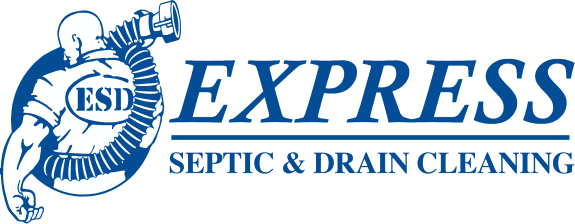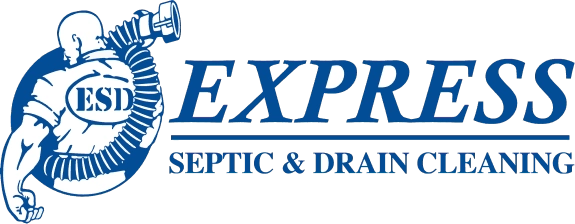The United States Environmental Protection Agency (EPA) describes a septic tank as a watertight tank that is designed to receive and treat wastewater. It is usually buried. Once in the tank, the heavy solids sink to the bottom of the tank, and wastewater is dispersed to a drainfield. There are a number of different ways to look at septic tanks and septic systems.
One way is to say there are only two types: conventional and alternative. Another way is to consider how the system handles the wastewater and disposes of it in a sanitary manner. Yet another way is to review all the different types of materials that can be used to make a septic tank. To answer the question of how many there are, we’ll look at different aspects of septic systems and tanks.
What Is a Conventional Septic Tank and System?
Throughout civilization, humans have been working on the problem of removing waste from their living spaces. It was around 1860 that the first septic system was developed. It consisted of a concrete tank and clay pipes. Gravity moved the waste from the home through the pipes and into a concrete holding tank.
Although the materials for the pipes and tank may have changed, this is basically the same design that is used today in a conventional septic system. Enhancements to this conventional system include the use of a drainfield for evaporation or absorption of liquid waste and sometimes a pump to disperse liquid throughout the drainfield.
Types of Alternative Septic Systems
Generally speaking, the principal characteristic that distinguishes alternative systems from the conventional system is the movement and handling of the wastewater discharged from the septic tank. According to the EPA, here are the alternative septic systems:
- Drip distribution system
- Mound systems
- Recirculating sand filter system
- Evapotranspiration system
- Aerobic treatment unit
- Constructed wetland system
- Cluster/Community system
Drip Distribution System
With this system, an additional holding tank is required to hold the waste liquid that is then dispersed periodically with a timer and a pump. The drip lines are buried close to the surface, so no mounds are required, but an electricity source is.
Mound Systems
In locations with shallow soil depth, shallow bedrock, or high groundwater levels, a mound may need to be built to hold the drainfield. When space is limited, building a mound to accommodate the septic drainfield may not be possible.
Recirculating Sand Filter System
For a septic system close to a body of water or where the water table is high, sand filters are an alternative wastewater treatment. The waste is pumped through a sand filter before it is discharged to a drainfield.
Evapotranspiration System
In arid climates, evapotranspiration eliminates wastewater with no risk of it entering the groundwater. This septic system works when there is shallow soil and plenty of dry air, heat, and sunshine, but it is sensitive to too much rain or snow.
Aerobic Treatment Unit
With an aerobic treatment unit, air and bacteria work on the solid waste to decompose it. It is effective where there is shallow soil, a small amount of land surface area, a high water table, or a close-by body of water.
Constructed Wetland System
In rural areas, this is a very popular means of handling waste and wastewater. With an impermeable liner sheathing a hole in the ground, gravel and sand are placed at the bottom. Wetland plants are also introduced into the contained environment. Waste leaves the septic tank and enters the wetland system where the plants and other naturally occurring microbes and media work to break down the waste.
Cluster/Community System
Many septic tank systems can be adapted to handle a small cluster or community of homes. This is a popular method of handling waste in small, rural subdivisions. Each home has its own septic tank, but the processing of the waste is centralized and receives wastewater from each home’s septic tank.
Materials for Septic Tanks
Each of the septic systems briefly described above requires the use of a septic tank. There are a number of materials used to manufacture septic tanks. Here are four types of septic tanks:
1. Concrete
Concrete has both the advantage and the disadvantage of being heavy. The advantage of having a heavy septic tank is that once it is positioned in the ground, it will stay in place. The disadvantage to being heavy is that it is more difficult to maneuver and put into place. It is also durable and an ideal material for a septic tank.
2. Polyethylene Plastic
Plastic septic tanks are lightweight, economical, and easy to install. If the water table is close to the surface, however, they could be pushed up by rising water.
3. Fiberglass
Some septic tanks are plastic but reinforced with fiberglass. They are a bit stronger and have many of the same benefits and concerns as plastic septic tanks.
4. Steel
Although some of the early septic tanks were repurposed steel drums, steel is rarely used anymore as a septic tank material. Steel is heavier and more costly than plastic or fiberglass, and metal tanks have a tendency to rust, which can shorten their useful life when compared to other materials.
Soil Type Will Help Determine Best Septic Tank and System
The type of soil that will house the septic system must be taken into consideration. The soil in Idaho is the Threebear series, which is a type of andisol. It was formed from volcanic ash and silt. This combination is called a silty loam.
What Other Factors Are Considered When Choosing a Septic System?
In addition to soil type and other factors discussed above, there are numerous factors taken into consideration. These include:
- Household size for a single-home system
- Slope of the yard into which the system will be installed
- Expected weather conditions, including rain, snowfall, humidity, and sunshine
- Local regulations
A Trusted Company Looking Out for You
Here at Express Septic & Drain Cleaning in Nampa, Idaho, we have a vision statement: “For every person to live a safe and happy life.” Our role in accomplishing that statement is to make sure that every service we provide and every customer interaction that we have helps contribute to your happiness and safety. We continue learning to keep up with the latest developments in septic system technologies, and we will always be honest with you in all of our dealings.
Most of our services are centered on septic systems. These include pumping, inspections, repairs, and maintenance. We also provide EarthBuster Deep Soil Decompactor services. If your septic system is in need of enzyme treatment, we can help with that as well. Over the years, our customers have learned that we deliver stellar service and strive for customer satisfaction. We encourage you to read the reviews from our customers on our website. We also have specials that will save you money. Check these on our website, too.
For all your septic pumping and other needs, contact us at Express Septic & Drain Cleaning with a phone call or by reaching out through our website.


